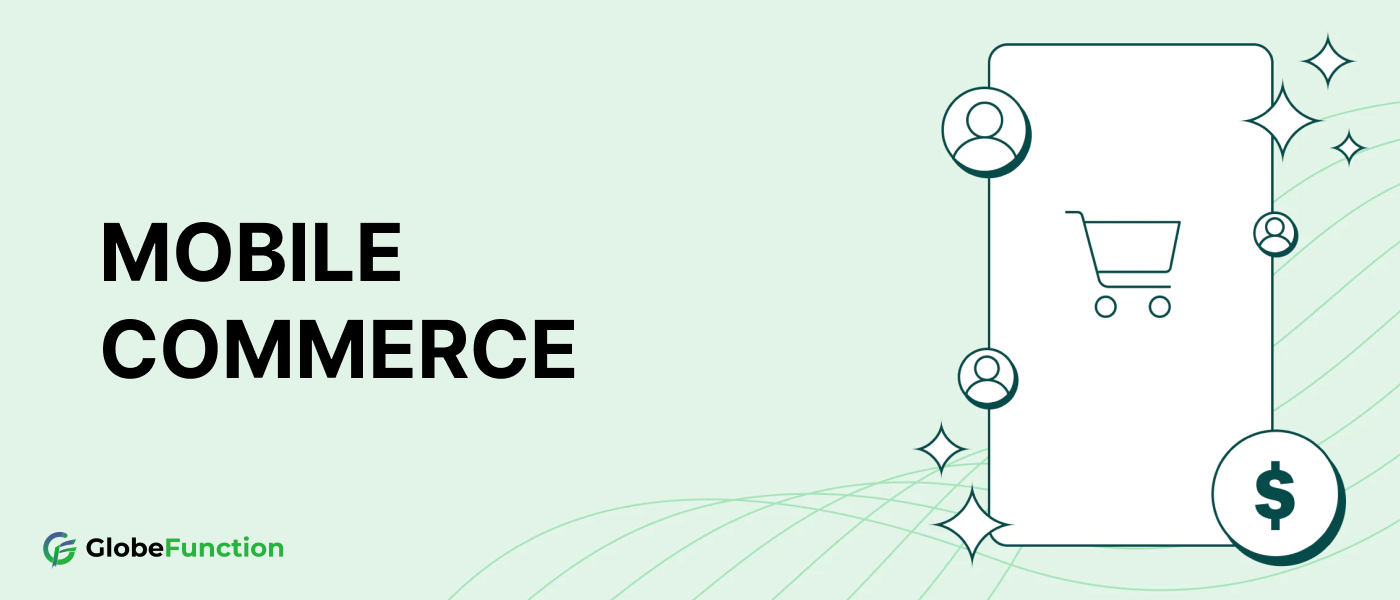Hey there! Ever wondered how your phone can be like a magic store? It’s called Mobile Commerce, or mCommerce. Imagine having a little mall inside your pocket! 📱✨
So, what’s this MCommerce thing? It’s not just regular shopping on your phone.
It’s like having a super cool friend who helps you buy stuff. Exciting, right? Now, let’s dive into the fun world of Mobile Commerce in 2024 and see what awesome things your phone can do.
What is Mobile Commerce?
Mobile commerce, also known as m-commerce, is similar to having a virtual mall in your pocket. It’s all about buying and selling items with your smartphone or tablet. Consider it like online shopping, but much more convenient!
Consider this: you’re sitting on your couch, wishing for a new pair of sneakers. With mcommerce, you take out your phone, open an app or website, look through some cool options, and bam! You just went shopping without leaving the comfort of your own home.
mCommerce makes it easy to buy clothes, gadgets, or even order your favorite food. It’s like having a personal shopping assistant available 24 hours a day, seven days a week, and it fits right in your pocket. So, why go to the store when mobile commerce allows you to shop anywhere, at any time?
Difference between Mobile commerce and Electronic commerce
M-Commerce | E-commerce |
M-commerce is a relatively old concept. | E-commerce is a relatively new concept. |
It is a subcategory of ecommerce that performs the same function via mobile devices. | It is a broad term that refers to online shopping and payment using electronic devices such as laptops and computers. |
However, in the case of m-commerce, some activities can also be carried out without the use of the internet. | The use of the internet is required in e-commerce. |
M-commerce devices are easy to transport and have a high portability rating. | E-commerce devices are difficult to transport and have poor portability. |
M-commerce emerged in the 1990s. | E-commerce emerged in the 1970s. |
Because of the use of mobile devices, its reachability exceeds that of e-commerce. | Its reachability is lower than that of m-commerce because it is less portable. |
Location tracking capabilities in m-commerce are so good because mobile apps track and identify user locations using GPS technology, Wi-Fi, and so on. | Due to device portability, location tracking capabilities in e-commerce are limited. |
Push notifications are possible in m-commerce. | Push notification fails in e-commerce. |
Mobile devices such as smartphones and tablets are used to conduct m-commerce. | Desktop or laptop computers are used for e-commerce. |
M-commerce enables customers to shop and make purchases from any location. | E-commerce typically necessitates a reliable internet connection as well as a computer. |
M-commerce provides more payment options, such as mobile wallets and contactless payments. | Credit cards and other traditional payment methods are commonly used in e-commerce transactions. |
Types of Mobile Commerce
- Mobile Shopping :
This type of mCommerce entails using a mobile device to buy and sell products and services. Consumer activities in this category can range from browsing for goods on a smartphone to ordering a ride-hailing service through an application.
On the business side, it may include practices for marketing products and services. Making shoppable posts on social media, sending location-based SMS advertisements, or using push notifications on mobile applications are some examples.
- Mobile Banking:
This term refers to using a mobile device to access banking services such as depositing checks or viewing account balances. Many banks have their own app and mobile website, but some also offer services via SMS.
- Mobile Payments:
Mobile payment serves as a substitute for conventional payment methods like cash, checks, and credit/debit cards, often referred to as Mobile Money Transfer, mobile money, or m-payments. The preference for contactless payments has increased among customers due to physical distancing, making mobile payments a convenient choice.
M-Commerce: Advantages
Establishes a global customer base:
Customers can purchase at their leisure thanks to the internet and mobile devices, which have the potential to build a global customer base. It creates another marketing channel where mobile applications can be used to their full potential and provide a better customer experience.
Allow access to user data:
When a customer logs into the brand’s mobile application, the user information is saved and the brand gains access. When a campaign is planned or customized messages are to be sent to customers, they can easily access that data and send the latest collections and brand offers to easily attract them.
Analytical depth:
Mobile commerce solutions can provide businesses with more user data, ranging from location tracking to browsing behavior. This allows you to create a more personalized marketing strategy, which can lead to increased profits.
Direct connection with the audience:
Mobile commerce allows you to reach your customers on the device they use the most – smartphones
M-Commerce: Disadvantages
Privacy issues:
When you use your mobie phone to buy things, there’s a worry about how the app collects and keeps your personal information. People might feel afraid about how their data is being treated, and this trust issues can make them not want to use mobile shopping.
Connectivity Issues:
If a customer is purchasing online, they need an internet connection to complete the transaction. There’s a penetration in internet service still in rural areas we see a lack of smartphones and internet connections. Without a proper connection, your customer will not be able to view the mobile design and the brand might miss the selling opportunity.
Shipping Cost:
The mobile transaction which is done to buy any product may add up shipping costs. But by setting a minimum for free shipping and low cost for shipping the products will encourage buyers to continue shopping and will increase the number of sales.
Future Trends in Mobile Commerce
Augmented Reality Shopping
The integration of augmented reality in mcommerce offers customers the ability to visualize products in their real-world surroundings before making a purchase. This experience enhances customer satisfaction and reduces returns.
Voice Command Shopping
Voice commad shopping through virtual assistants like Siri, Alexa and Google, etc. Users can browse products, add items to their carts, and complete transactions using voice commands, making the shopping experience hands-free and efficient.
Collab with Social Media Platforms
Mobile commerce is increasingly integrate with social media platforms. Businesses use social media for product launches, promotions, and seamless shopping experiences, creating a direct link between social engagement and mobile commerce.
Conclusion
The definition and importance of mobile commerce have been explained in this article. We’ve also looked advantages and disadvantages of mcommerce. We also see the mCommerce vs eCommerce and Future trends of Mobile Commerce
I hope this information is helpful for you, make sure to save our blog bookmarks for future posts like this.
Frequently asked questions (FAQs)
Mobile commerce allows users to make transactions on the go through mobile devices, while traditional e-commerce relies on desktop or laptop access.
Implementing robust security measures such as encryption and secure payment gateways is essential to protect businesses and consumers from potential threats
SEO ensures that mobile commerce websites rank high in search engine results, attracting more traffic and providing a better user experience.
Virtual reality (VR), blockchain, and progressive web apps are some emerging technologies shaping the future of mobile commerce.
Implementing personalized experiences based on user preferences and behaviors, such as tailored recommendations and promotions, enhances user engagement and builds brand loyalty.














